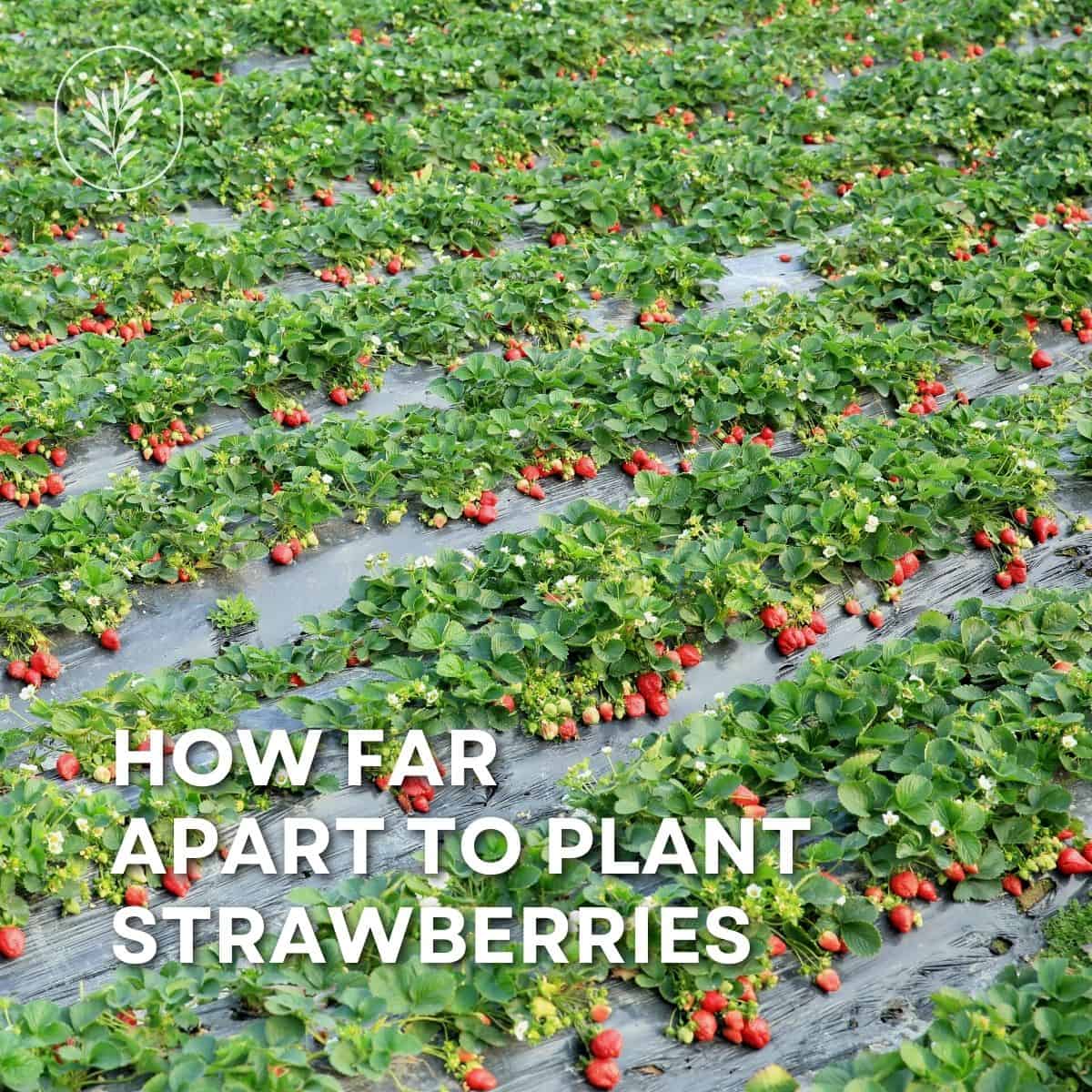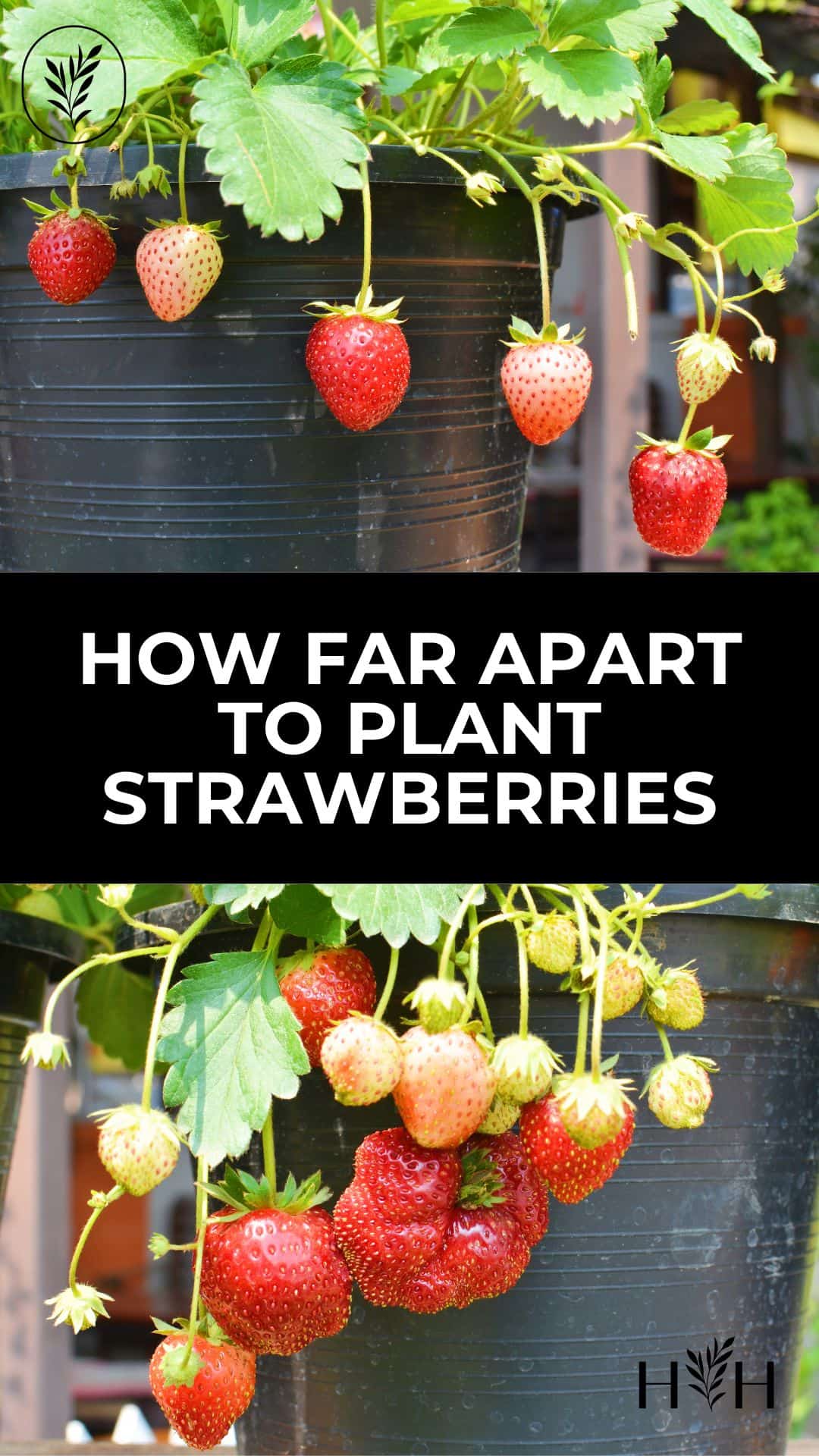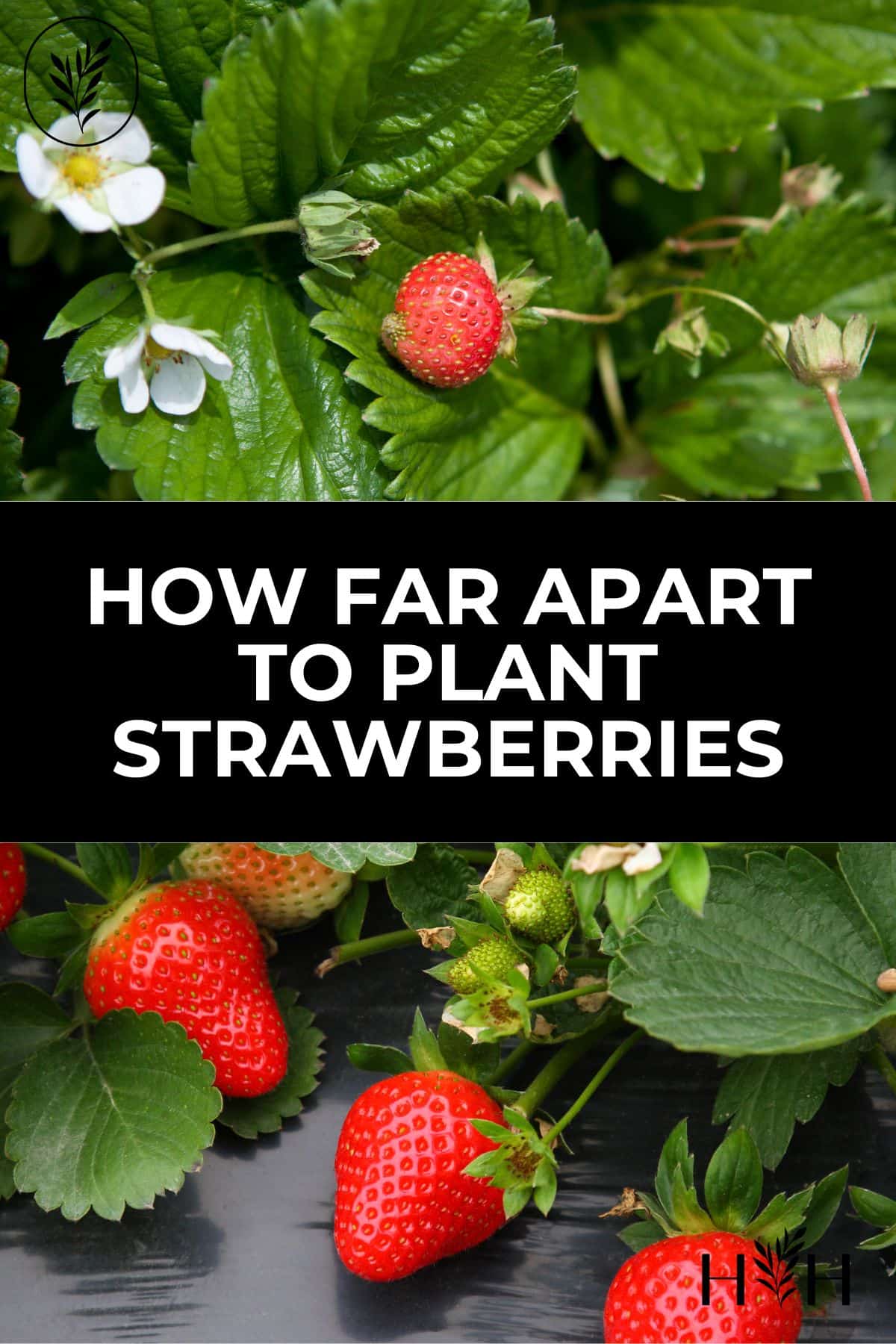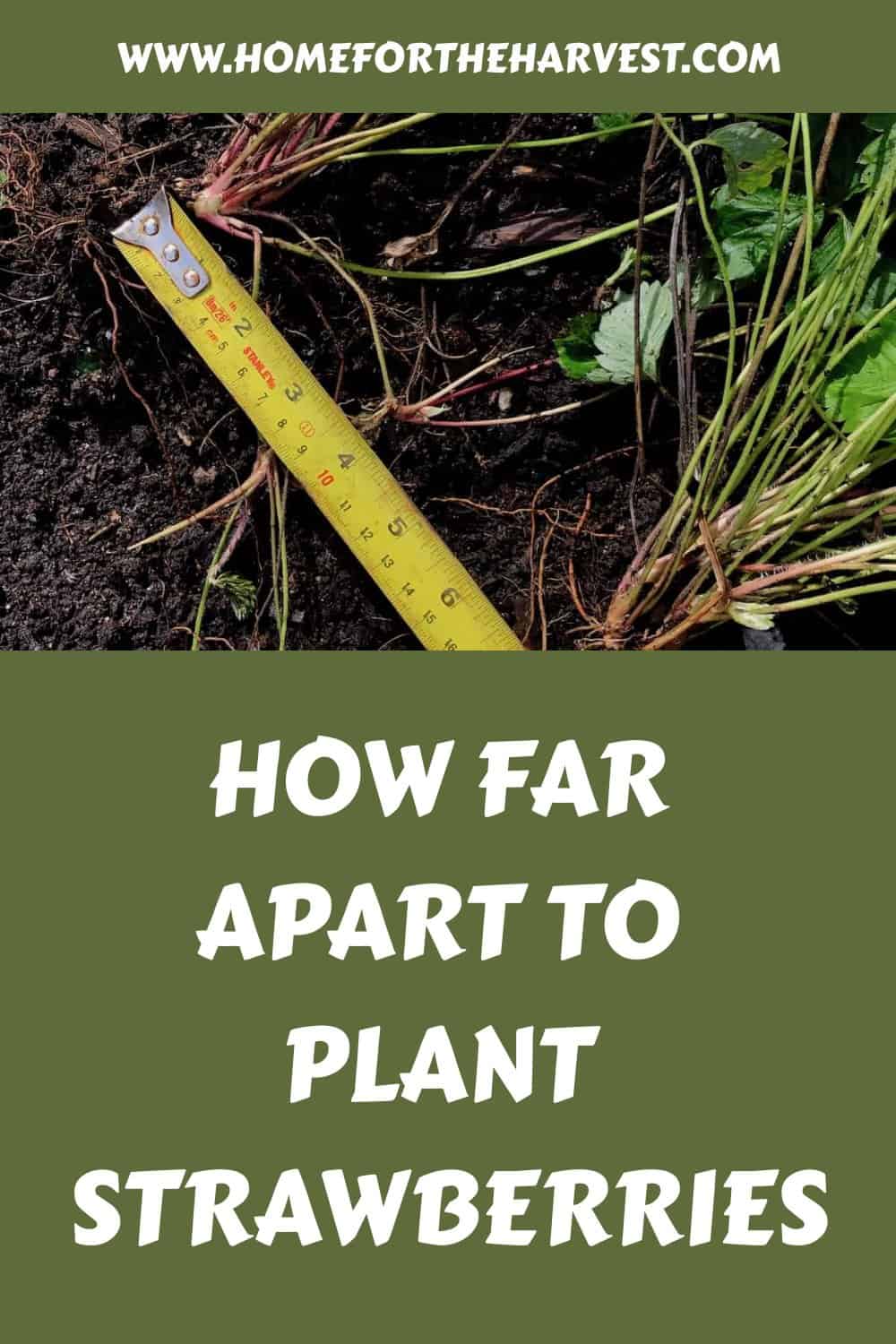Wondering how far apart to plant strawberries? Here are some common, tried-and-true spacing distances for strawberry plants.
Strawberry plants can be spaced as close as 8 inches or as far apart as several feet, depending on the type of strawberry plant, your budget, and the layout of the planting site. Typically, everbearing varieties are planted about 12″ apart and runner-forming June-bearing varieties are planted more like 18″ apart.
To fill in growing space quickly, it’s better to go with closer spacing to maximize the number of plants. If you’d rather spend less on plants and don’t mind a bit of a wait, it’s fine to space the plants a few feet apart. Read on to learn more about how far apart to plant strawberries!
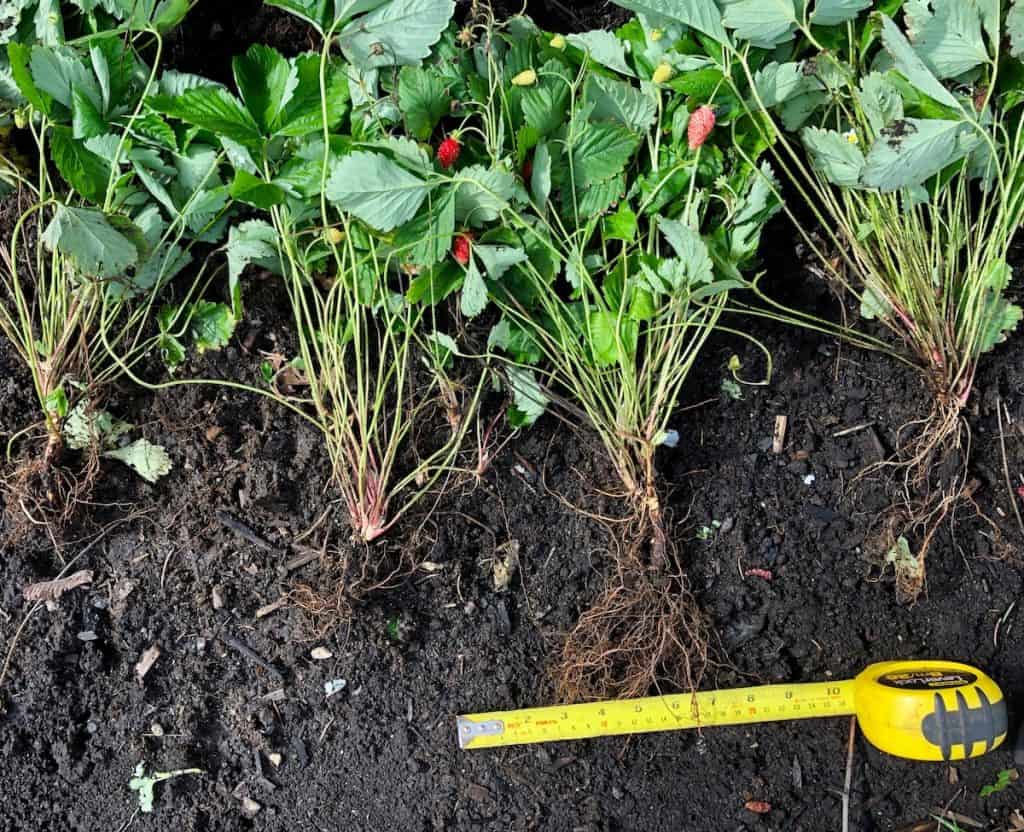
Planting strawberries close together
Planting strawberries close together is the best way to get delicious strawberries quickly! For a new strawberry patch, space strawberries a minimum of 8″ apart. Square-foot gardeners can plant one strawberry plant per square so that the strawberry plants are 12″ apart.
A close spacing of 8-12″ between plants will keep weeds down while maximizing berry harvest. The plants will, however, be competing for sunlight and nutrients, meaning that the berries might be smaller than if the plants were far apart. The close spacing can also make it easier for disease to spread, especially if strawberries are prone to disease in your area (common in wet climates).
Here are some recommended minimum spacings for different types of strawberry plants:
- Alpine Strawberries = 10″ Apart (25 cm)
- Ever-Bearing Strawberry Varieties (Quinault, Ozark) = 12″ Apart (30 cm)
- Day-Neutral Strawberry Varieties (Seascape) = 12″ Apart (30 cm)
- June-Bearing Strawberry Varieties (Honeoye, Jewel, Chandler, Eversweet) = 18″ Apart (45 cm)

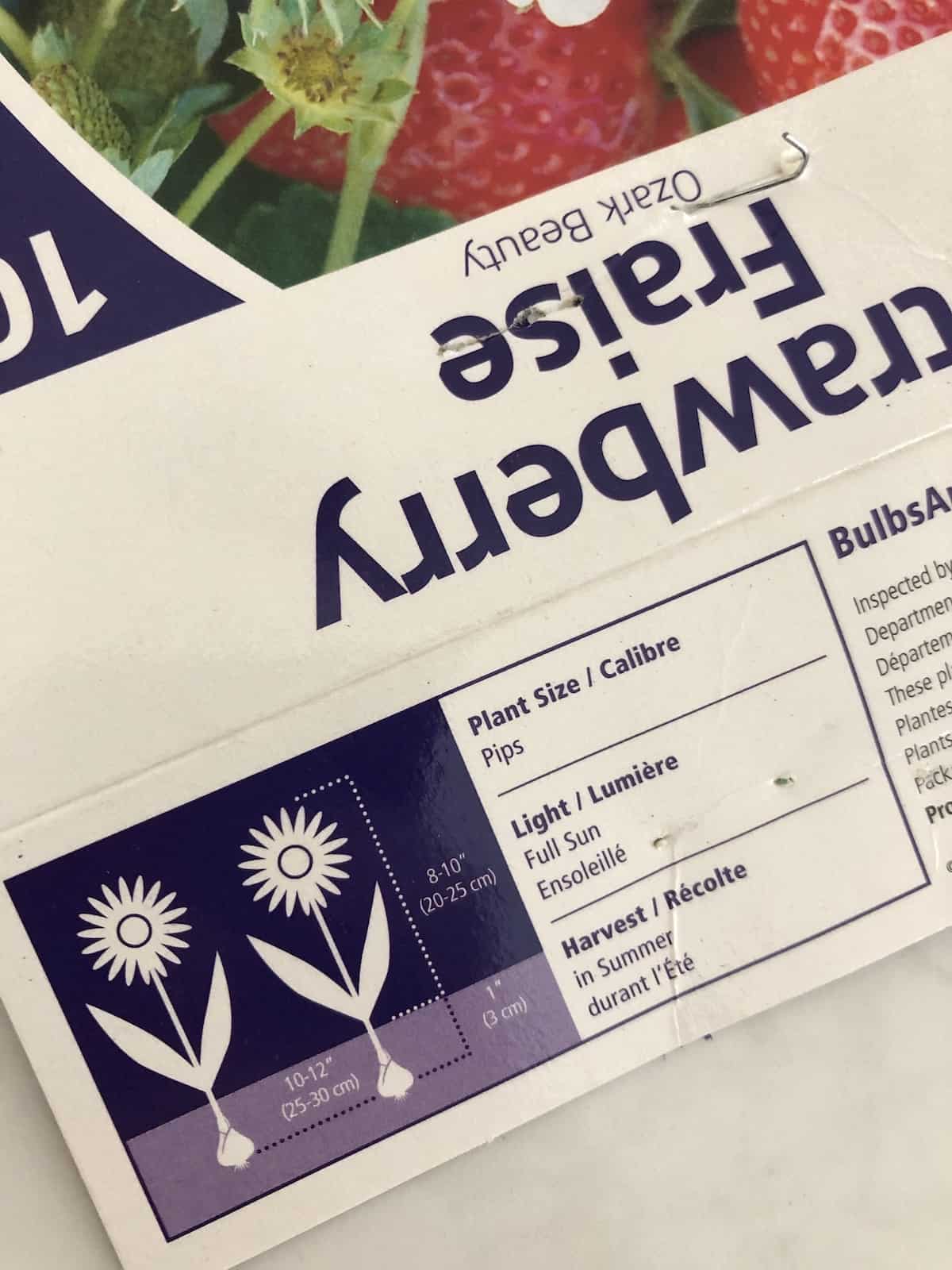
Planting strawberries quite far apart
Planting strawberries far apart is the most economical way to grow a big strawberry patch. Most strawberries propagate themselves without any help from gardeners. That means you don’t have to buy as many plants as you’ll need because each plant will multiply!
“June-bearing cultivars are best suited to the matted row system, where, where berries are set out 16 inches apart down a row. If you have room or multiple rows, make sure there are 3 feet between them. Over time, you can allow runner growth to fill in the rest of the row.
The hill system is better for day-neutral or everbearing cultivars and requires plants to be set out about a foot apart, three across (“hill” refers to the appearance of the berries, there is no mounding of the soil required).”
Growing Berries and Fruit Trees in the Pacific Northwest: How to Grow Abundant, Organic Fruit in Your Backyard, by Tara Austen Weaver
Rather than planting the strawberries all in one group, space them out over the whole future strawberry patch. It’s OK if there is a lot of bare ground. It’ll be full of strawberry runners before you know it.
A year after planting, many of my strawberry plants have 4 or 5 strawberry baby plants on their runners. You can either leave them to choose their own growing spots (they’ll root themselves), or you can transplant them to a desired location. The runners between plants are no longer required once the baby plants are established.
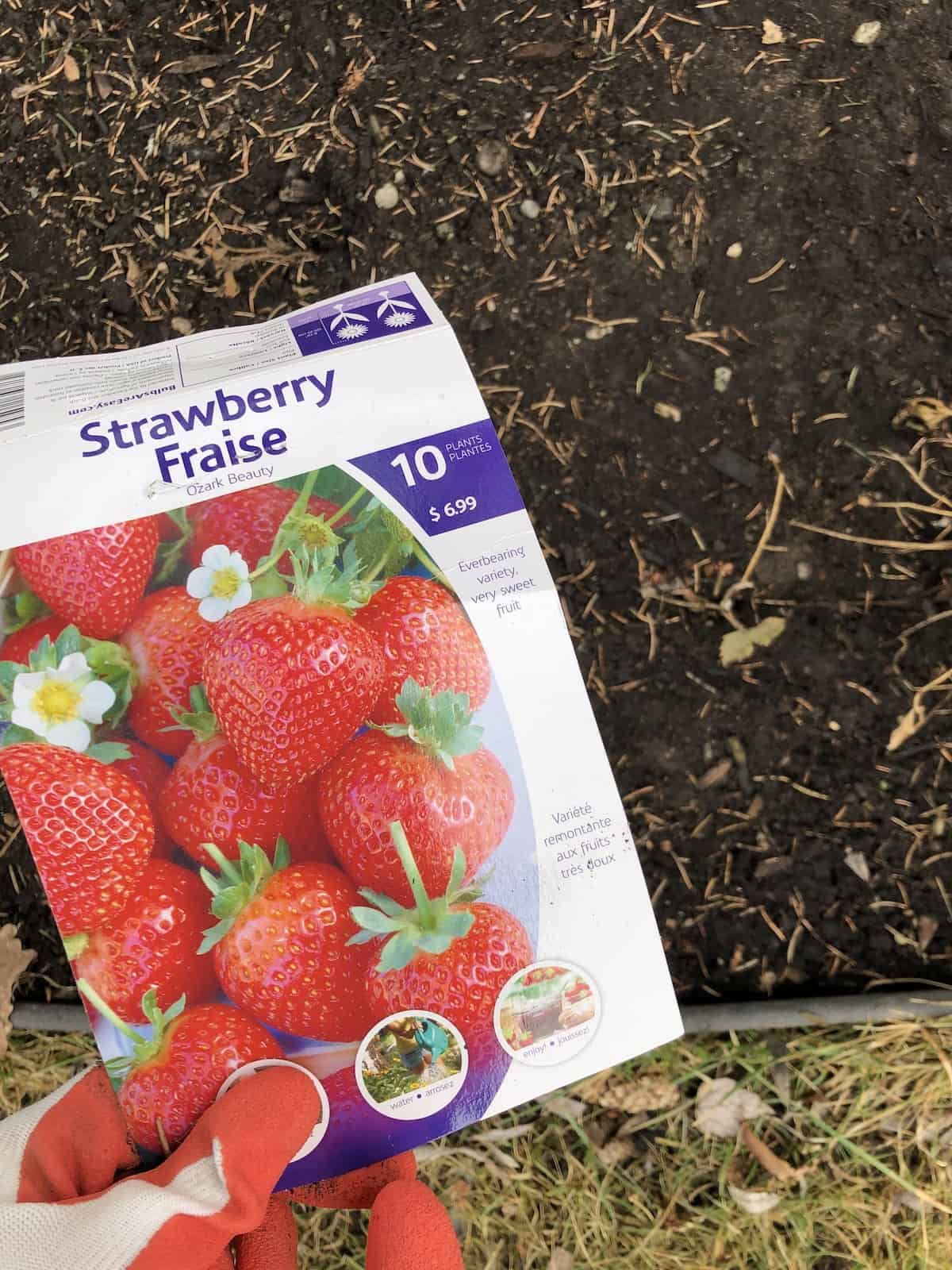
How far apart to plant strawberries to grow the biggest and juiciest berries
As discussed above, strawberries grown close together will compete with each other for nutrients and sunlight. Therefore, to grow the biggest, juiciest berries, competition from other strawberry plants (and from weeds, et cetera), should be minimized. You won’t get as many berries, but the ones you get will be awesome. It takes a lot more work, but it may be worth it to you.
To maximize sunlight and reduce competition, grow each strawberry plant far apart from the others on a little mounded hill of soil. The hill can be 1-2′ across in diameter and 6-12″ higher than the surrounding ground. You can also do one long mound instead of separate little hills.
The key to reducing competition is removing weeds and runners. Pruning the runners off the mother plants keeps the plants from expending energy on growing new plants. We want all the energy to go into big yummy berries!
What are strawberry runners anyways?
Most strawberries multiply by sending out “runners”. Runners are shoots that come off a “mother” strawberry plant. The runner shoots roots down into the soil and grows a baby plant about a foot away from the mother plant.
Further Reading: See this article and handy diagram from the University of Minnesota Extension
Some everbearing and day-neutral strawberry types are a lot less likely to send out runners. Alpine Strawberries fall into this category. These strawberries tend to grow more crowns right at their base. Crowns can be dug up, separated, and planted further apart to propagate additional plants.
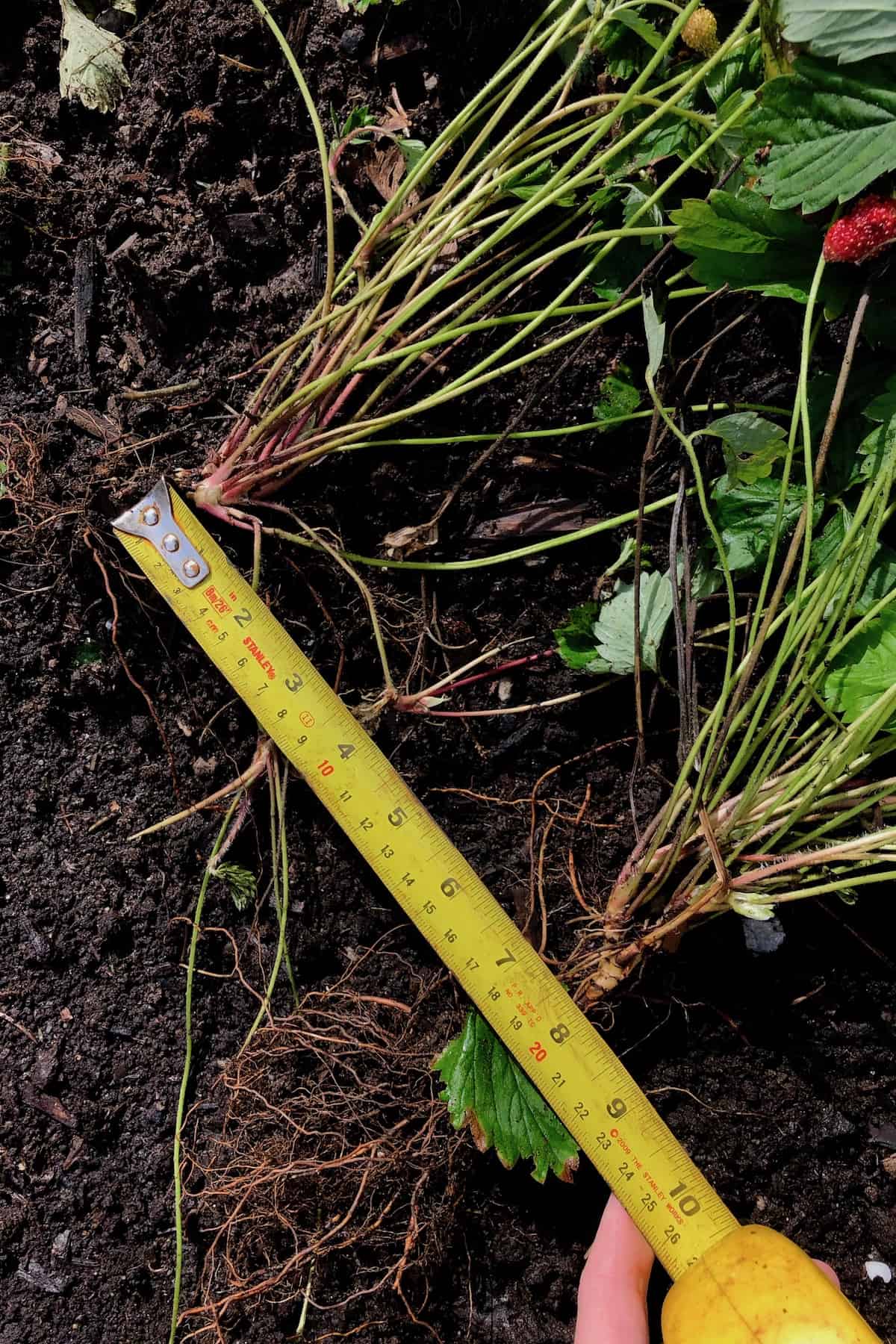
Tips for planting strawberries at different spacings
For closely spaced strawberries, it’s often easiest to dig a long trench with a proper shovel. Then, lay out the strawberry plants beside the trench and measure the spacing out. Backfill once the strawberries are placed the correct distance apart.
For far-apart strawberry plants, it’s easier to dig an individual hole for each plant. Make sure that each hole is deep enough so that the roots can be placed vertically.
What about rows? Do strawberries need rows?
Unless you’re setting up some kind of commercial strawberry operation, there isn’t much need for formal rows. The limiting factor on whether you need rows or not is whether or not you can reach the strawberries to harvest them! Strawberries naturally form a patch and can almost be thought of as a ground cover….not really something that loves to be confined to rows.
“Space plants 12-18 inches (30-45 cm) apart in the row with 30 inches (75 cm) between rows.”
Rodale’s Illustrated Encyclopedia of Organic Gardening: The Complete Guide to Natural and Chemical-Free Gardening, by Anna Kruger, Maria Rodale, and Pauline Pears
I generally plant strawberries in a wide row. Two feet is a nice width for a strawberry patch, as even little arms can usually reach most of the strawberries. A strawberry row might be several plants wide – and that’s ok – as long as you can reach the strawberries without trampling the row.
For large gardens with multiple wide rows of strawberries, be sure to leave enough space between rows to comfortably walk between them (and maybe even fit your wheelbarrow through.
The “Matted row” system for serious strawberry growers
A common pattern for growing lots of strawberries is to have 2-foot wide rows separated by 2-foot wide paths. This matted-row system is the most common way of planting June-bearing strawberry varieties. Allow the runners to root in the planting row and remove any runners that make their way onto the path. Easy peasy!
To set up a piece of land for growing strawberries in matted rows, mark out where your 2-foot wide rows and paths will be before you start planting. Plant the strawberry plants in the middle of the future “matted row,” about 2 feet apart from each other. The planted rows will be 4 feet apart (to allow for the 2-foot paths).
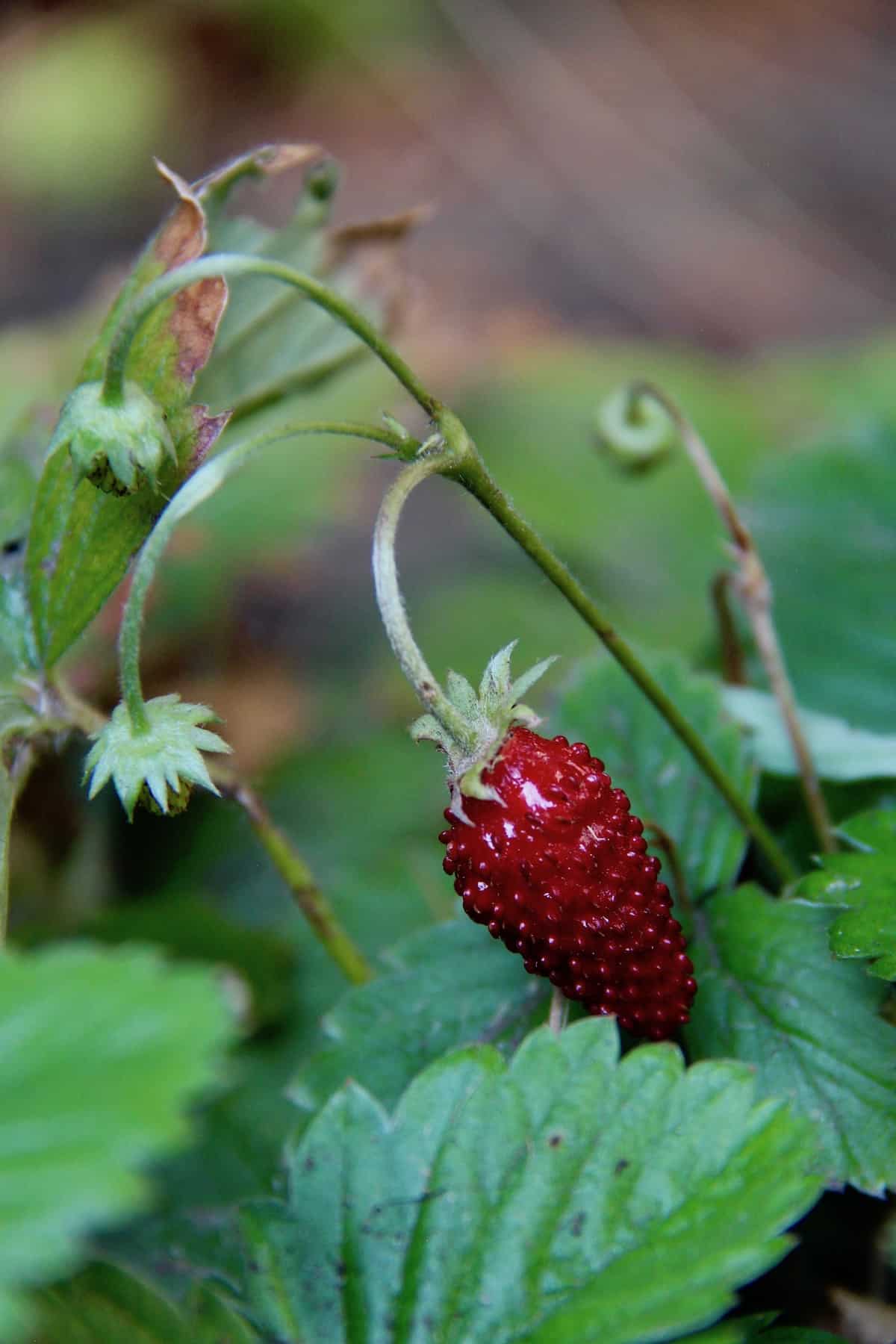
Can strawberries be too closely spaced?
Yes, strawberries can be planted too close together, especially if you’d like big juicy berries. A dense mat of strawberry plants isn’t necessarily a bad thing, but it’s not optimal for harvesting big, yummy berries.
A little bit of competition for sunlight and nutrients is a good thing, but it shouldn’t be an all-out battle. While spacing strawberries close together does help strawberry plants out-compete the weeds, some air movement between plants helps keep them healthy. Stuffy air can lead to disease. Strawberry beds that have become overly dense will require thinning (pulling out some of the plants).
The closest planting spacing I’ve had success with was 6″ apart – and that was with a single row of alpine strawberry plants. I planted them very close together because I was more concerned about having a dense, pretty, ornamental line of strawberry plants than I was about harvesting large berries. Alpine strawberries make a lovely groundcover, and since they were only going in a very skinny row, 6″ turned out to be fine. Usually, 8″ is my absolute minimum spacing.


